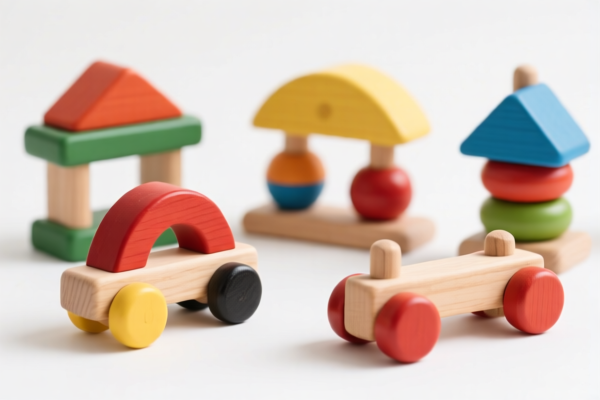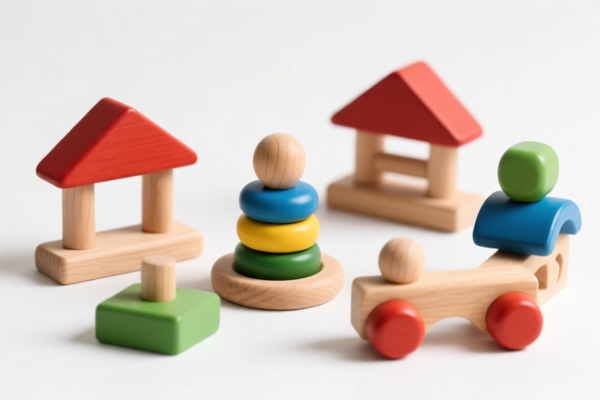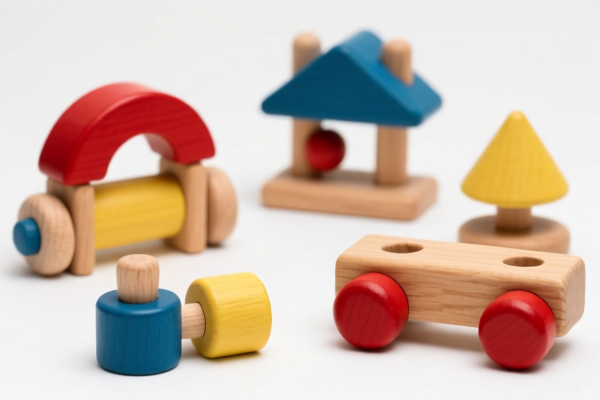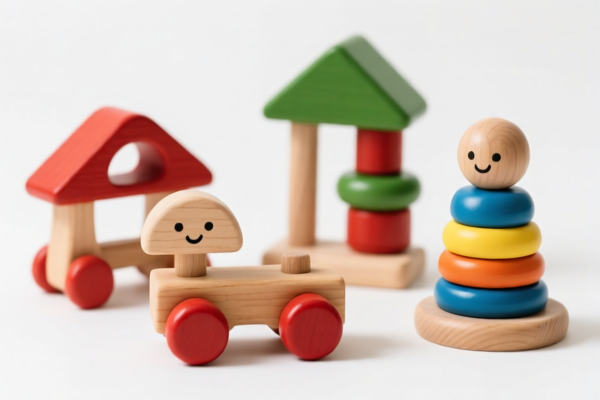| HS Code | Official Doc | Tariff Rate | Origin | Destination | Effective Date |
|---|---|---|---|---|---|
| 9503000071 | Doc | 30.0% | CN | US | 2025-05-12 |
| 9503000090 | Doc | 30.0% | CN | US | 2025-05-12 |
| 4417008090 | Doc | 60.1% | CN | US | 2025-05-12 |
| 4417008010 | Doc | 60.1% | CN | US | 2025-05-12 |
| 4421919300 | Doc | 55.0% | CN | US | 2025-05-12 |
| 4421999300 | Doc | 55.0% | CN | US | 2025-05-12 |
| 4823901000 | Doc | 55.0% | CN | US | 2025-05-12 |
| 4823902000 | Doc | 55.0% | CN | US | 2025-05-12 |
| 9208900080 | Doc | 42.8% | CN | US | 2025-05-12 |
| 9507902000 | Doc | 41.2% | CN | US | 2025-05-12 |
| 9507908000 | Doc | 39.0% | CN | US | 2025-05-12 |
| 9209998000 | Doc | 42.8% | CN | US | 2025-05-12 |
| 9209994080 | Doc | 37.5% | CN | US | 2025-05-12 |




Wooden Educational Toys
Wooden educational toys encompass a broad category of playthings constructed primarily from wood, designed to facilitate learning and development in children. Their enduring popularity stems from their natural aesthetic, durability, and ability to foster a variety of skills.
Material
The primary material is wood, typically sourced from sustainably managed forests. Common wood types include:
- Beech: A hard, strong wood often used for building blocks and puzzles.
- Maple: Known for its smooth texture and is frequently used for smaller, detailed toys.
- Birch: A lighter wood, often used for toys intended for younger children.
- Pine: A softer, more affordable wood, often used for larger, less detailed toys.
- Rubberwood: A sustainable hardwood derived from the rubber tree, offering good durability.
Finishes often include non-toxic paints, stains, waxes, and oils to protect the wood and enhance its appearance.
Purpose & Function
These toys aim to support cognitive, physical, emotional, and social development. Specific functions include:
- Cognitive Development: Problem-solving, spatial reasoning, shape recognition, color identification, early math skills.
- Physical Development: Hand-eye coordination, fine motor skills, dexterity, manipulation skills.
- Emotional Development: Creativity, imagination, self-expression, confidence.
- Social Development: Cooperation, sharing, communication (particularly with group play).
Usage Scenarios
Wooden educational toys are appropriate for a wide range of ages, from infants to pre-schoolers and beyond.
- Infants (0-12 months): Rattles, stacking rings, simple shape sorters. Focus on sensory exploration and early motor skill development.
- Toddlers (1-3 years): Building blocks, puzzles, shape sorters, push and pull toys. Emphasis on problem-solving, hand-eye coordination, and imaginative play.
- Pre-schoolers (3-5 years): More complex puzzles, construction sets, role-playing toys, early literacy toys. Focus on cognitive skills, social interaction, and preparation for school.
Common Types
- Building Blocks: Classic sets, unit blocks, magnetic blocks. Promote spatial reasoning, creativity, and problem-solving.
- Puzzles: Shape puzzles, jigsaw puzzles, tangrams. Develop problem-solving skills, hand-eye coordination, and spatial awareness.
- Shape Sorters: Help children learn shapes, colors, and spatial relationships.
- Stacking Toys: Develop hand-eye coordination, fine motor skills, and problem-solving skills.
- Construction Sets: Encourage creativity, problem-solving, and spatial reasoning.
- Role-Playing Toys: Kitchens, tool sets, dollhouses. Foster imagination, social skills, and language development.
- Bead Mazes: Develop fine motor skills, hand-eye coordination, and problem-solving skills.
- Abacuses/Counting Frames: Introduce early math concepts.
- Alphabet & Number Blocks: Support early literacy and numeracy skills.
Wooden educational toys can encompass a variety of items designed for learning and development through play. These toys are typically constructed from wood and cater to different age groups and skill levels. Based on the provided reference material, the following HS codes may be relevant:
- 4417.00.80.90 - Tools, tool bodies, tool handles, broom or brush bodies and handles, of wood; boot or shoe lasts and trees, of wood: Other Other. This code covers a broad category of wooden articles, and could potentially include simple wooden construction sets or basic educational tools.
- 4417.00.80.10 - Tools, tool bodies, tool handles, broom or brush bodies and handles, of wood; boot or shoe lasts and trees, of wood: Other Tool handles. While specifically for tool handles, this code demonstrates the classification of wooden components, which may be applicable to certain educational toy parts.
- 4421.91.93.00 - Other articles of wood: Other: Of bamboo: Other: Theatrical, ballet, and operatic scenery and properties, including sets. Although focused on scenery, this code illustrates the classification of wooden sets, potentially relevant if the educational toys are presented as a collection or kit.
- 4421.99.93.00 - Other articles of wood: Other: Other: Other: Theatrical, ballet, and operatic scenery and properties, including sets. Similar to the previous code, this covers wooden sets, and could apply if the toys are designed as a thematic collection.
According to the provided reference material, the HS code options related to 'wooden educational toys' are limited, with only the following 4 found.
It is important to note that the classification of these toys will depend on their specific construction and intended use. If the toys incorporate elements beyond wood, such as plastic or metal, additional HS codes may be relevant.
Customer Reviews
No reviews yet.